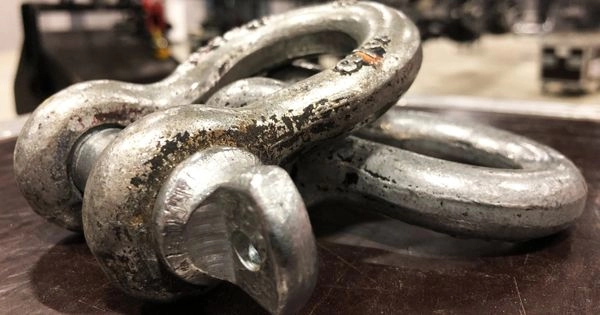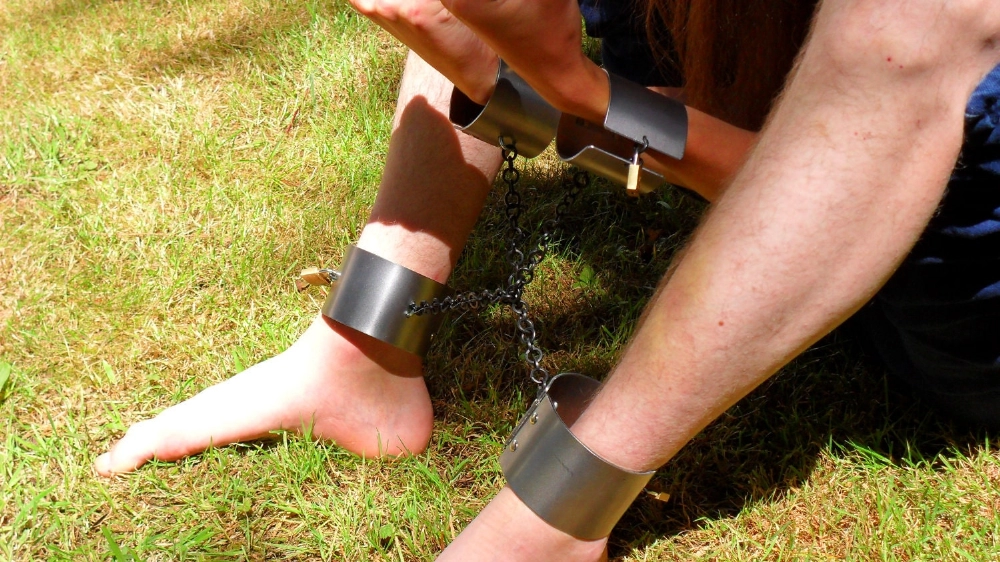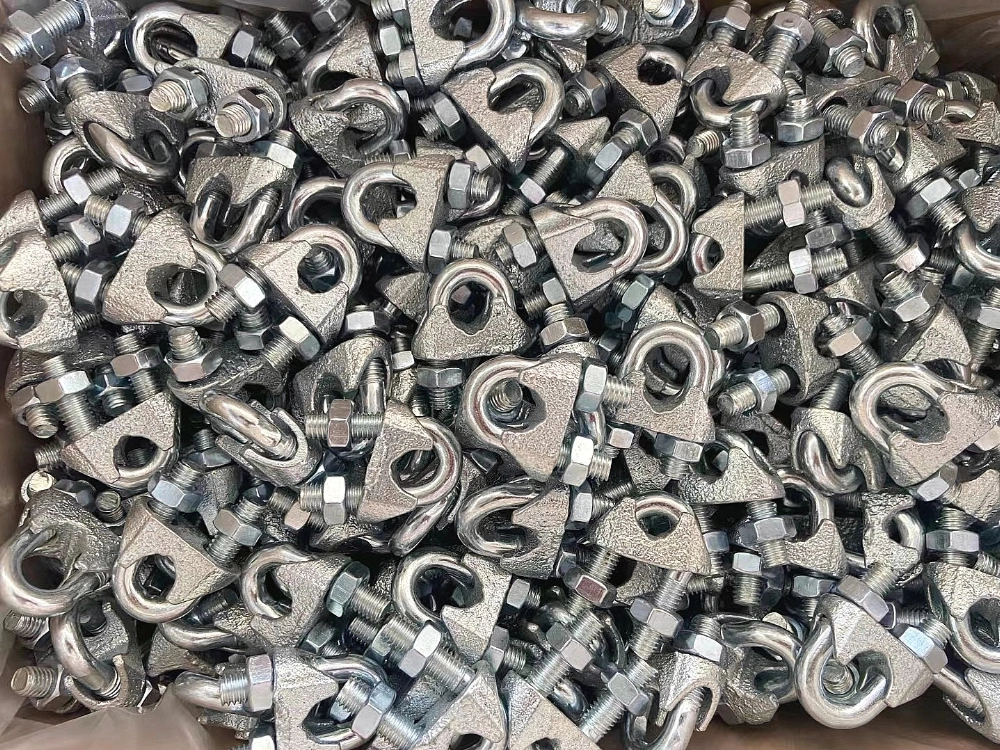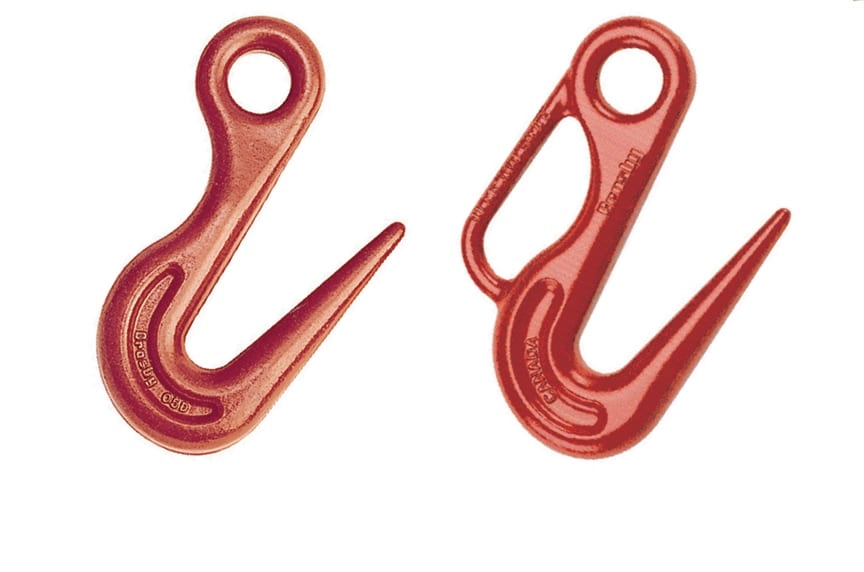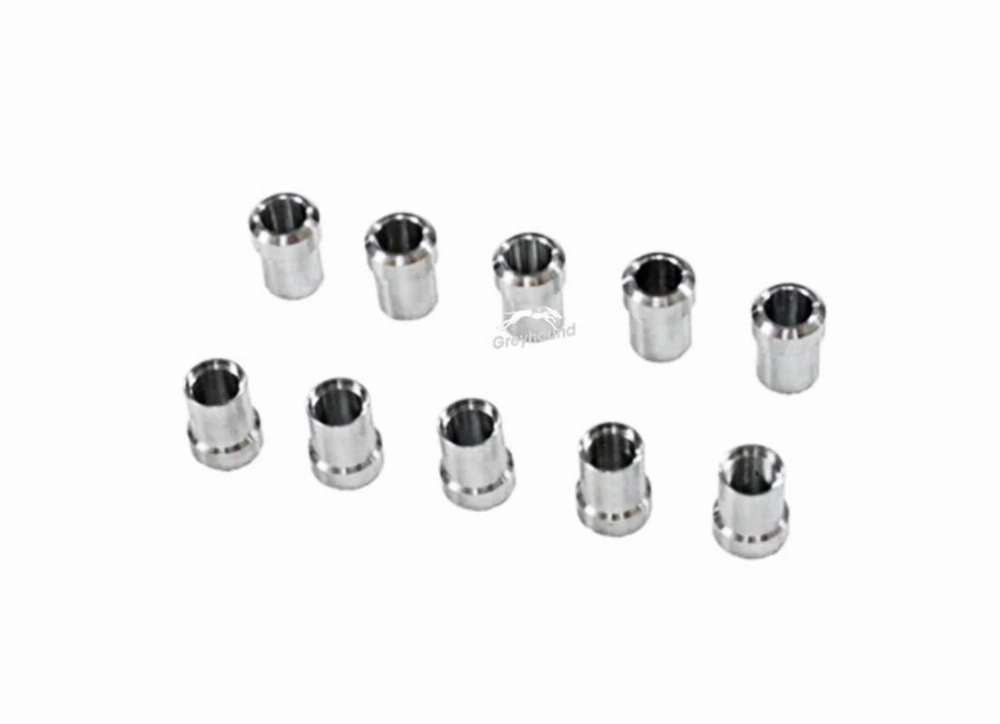Need help? Write to us info@hqlifting.com
- Charging Accessories
- Lifting accessories
- Steel Cable
- Beam cart
- Turnstile for load securing
- Load Ratchet Strap
- Lifting current
- Chain for Load Lifting
- Lifting equipment
- Slings
- Steel Cable Tensioner
- Polyester slingshot
- Load binders
- STEEL HOOK
- Steel Cable Clamp
- Electric winch
- Permanent magnets
- Steel Cable Clamp
- moitão
- Carabiners
- Screw With Eyelet
- Lifting Clamp
- Talha Manual
- Uncategorized
Call our consultants or chat online
+86 151 4514 5178
Unlock the Turnstile: Step by Step to Properly Release
✅ Learn the technique of how to release the ratchet strap with certification. Transportation and logistics professionals face problems with locks. This disrupts important operations.
The correct release of the ratchet keeps the loads secure. This prevents damage to equipment and industrial tie-down straps.
This guide shows how to release the ratchet strap following safety standards. Errors in release can cause problems in load securing. Learn to use the release lever and safety lock correctly.
What Are Ratchet Straps and Their Main Uses
Ratchet straps are tools used to securely tie down loads. They have a strong strap and a ratchet mechanism. This makes them essential in transportation and logistics operations.
To use them correctly, it is important to know how to tighten and release the ratchet. This ensures the stability of the loads.
Types of Ratchet Straps Available in the Market
| Type | Material | Maximum Capacity |
|---|---|---|
| Polyester Tape | Reinforced thermoplastic resin | Up to 3,000kg |
| Nylon Tape | Elastic polymer with UV treatment | 2,500kg to 8,000kg |
| Composite Tape | Aluminum + synthetic kevlar | Up to 12,000kg |
Common Applications in Transportation and Security
- Load securing on heavy machinery transport trucks
- Container lashing with ISO 17025 standards
- Prevention of lateral movements in civil construction loads
✅ In automotive car carrier operations, the proper use of how to open a ratchet strap prevents damage to vehicles during transport.
Importance of Knowing How to Handle Properly
Professionals should prioritize:
- Verification of certifications of the EN 12195-2 standard
- Practice on how to release the seatbelt ratchet without overloading the mechanism
- Registration in pre-operational inspection checklist
Handling errors reduce the tool's lifespan and compromise load safety. Technical knowledge ensures compliance with ABNT NBR 15,969 standards.
Understanding the Ratchet Mechanism in the Tie-Down Strap
The ratchet mechanism follows ISO 4309 standards. It is essential to understand its structure to ensure safety:
- Gear system: transmits force to adjust the belt tension;
- Tensioning lever: allows precise adjustment of the applied pressure;
- Central shaft: supports axial loads of up to 5,000 kg/cm²;
- Unidirectional lock device: blocks reverse movement without lubrication;
| Component | Technical Function |
|---|---|
| Gear system | Multiplies torque for secure fastening |
| Tensioning lever | Adjust tension in 3 pressure levels |
| Locking device | Guarantees automatic locking via ratchet gear |
✅ The operation is based on the relationship between torque and friction. The system locks reverse movements, preventing unauthorized displacements. It is crucial for professionals to understand this to how to unlock the belt ratchet without causing damage.
There are J-hook and S-hook models, each with its own characteristics. Knowing these differences is essential to comply with ABNT NBR 16.234 standards.
Understanding the mechanism makes the process easier how to unlock a ratchet strap. It is important to avoid sudden forces to prevent damaging the internal components.
Equipment and Tools Needed to Release the Ratchet
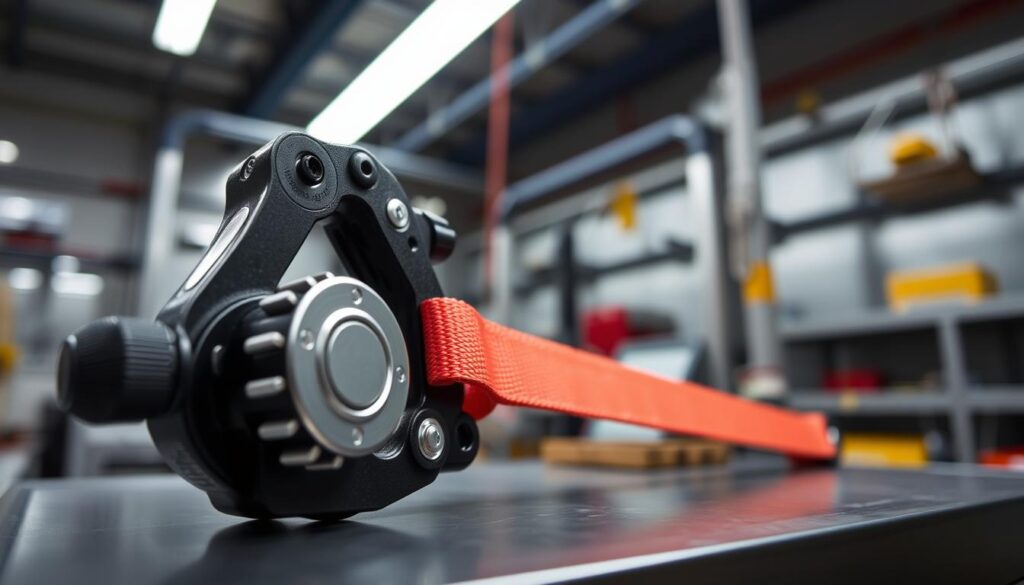
To do how to release strap with ratchet Safely, it is crucial to use certified tools. These tools have technical specifications that ensure efficiency and comply with industry standards.
- ✅ Extension lever: It has adjustable torque between 15-20 Nm. It is ideal for unlocking without damaging the ratchet.
- ✅ Industrial lubricant: Silicone-based sprays, certified for use on metal components. They are essential for how to open a turnstile with a tie strap in cases of corrosion.
- ✅ Precision hex key: Size 8-10 mm. Allows fine adjustments on mechanical safety locks.
For how to unlock a ratchet strap, it is necessary to use PPE.
• Gloves EN 388: They resist cuts and abrasion (e.g., model 3M 3240).
• ANSI Z87.1 Glasses: Protects against projected particles (e.g., Uvex Safe 15 glasses).
• ABNT NBR 8221 Helmet: Used in locations with risk of falling loads.
Using uncertified equipment can be dangerous. It is important to choose tools made of materials resistant to dynamic loads. The supplier company must ensure that the tools comply with ISO 13920 standards for lashing straps.
How to Release the Ratchet of the Strap: Standard Step-by-Step Method
Master the process of how to unlock a ratchet tie-down strap following technical protocols. Each step requires attention to critical components and alignment with OSHA safety standards and ISO 10549.
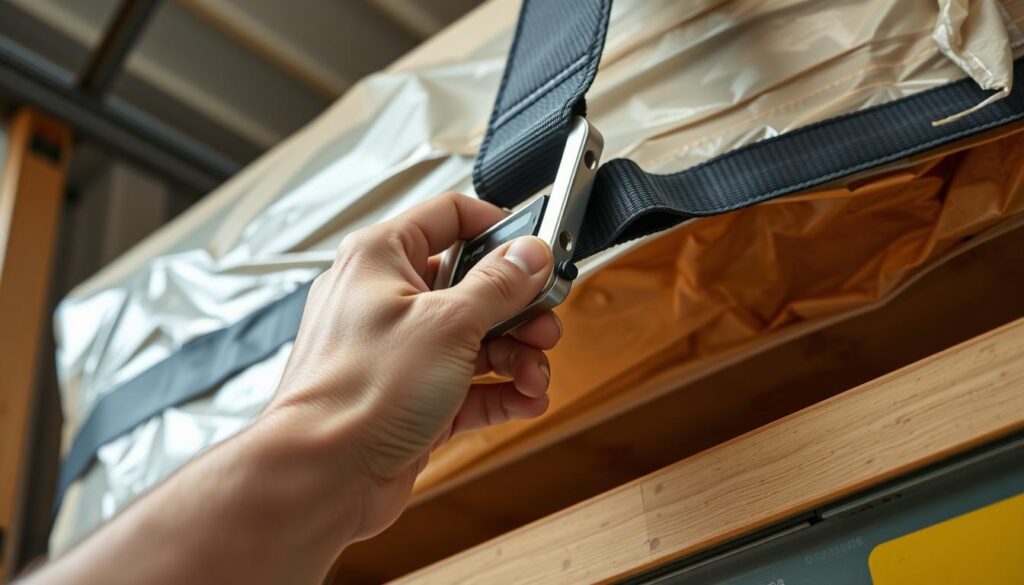
Identification of the Turnstile Parts
Before starting, find the following items: tension lever, central axis, locking mechanism e release point. A how to unlock a ratchet tie-down strap It depends on the accuracy at this stage. Use non-slip gloves to avoid slipping.
Hand Positioning
- Right hand: firm on the lever, thumb positioned over the central axis
- Left hand: stabilizes the ratchet base at a 45° angle
- Distance between hands: 15-20 cm for torque control
Lock Release Technique
- Press the side release button (if applicable) while holding the lever steady
- Rotate the lever in a smooth 90° motion to disengage the mechanism
- Apply lateral pressure on the locking pin with a hex tool (if necessary)
- Check the how to unlock a ratchet tie-down strap completing the release
✅ Attention: For loads over 500kgf, use auxiliary supports and follow the how to release ratchet tie-down strap according to standard EN 12195-2. Avoid sudden release to prevent mechanical shocks.
Tips for Loosening Ratchet Straps in Difficult Situations
To handle heavy loads or rusted mechanisms, use specialized techniques. ✅ The method of double stage helps reduce tension in a controlled way. This prevents the strap from breaking suddenly.
For operations of how to loosen ratchet strap under pressure, use certified extension bars. They must have a minimum strength of 2000 kgf.
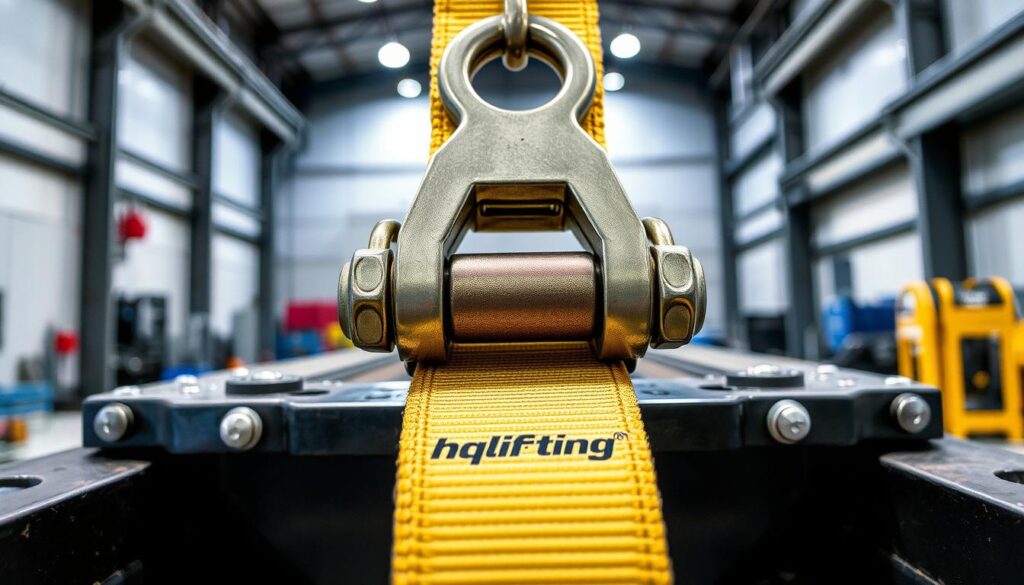
- Secondary leverage: Place the bar at an angle of 30°-60°. This increases torque without requiring much effort (OSHA standard 1910.176).
- Emergency lubrication: If the belt is stuck, apply anti-oxidation spray. This helps to how to open a ratchet strap that is difficult to open because of corrosion.
- Inspect critical components: Before attempting to open, check if the mounting pins are worn. Also, make sure the shaft is properly aligned.
In places with high heat or humidity, use tools and gloves that do not burn or stick. Do not force the strap too much if it is partially deformed. Release the tension laterally, following ISO 13981 guidelines.
How to Unlock Ratchet Tie-Down Strap on Vehicles
For operations in car carriers and automotive fastening systems, specific techniques ensure the safety and integrity of the loads. Certified equipment for up to 5,000 kgf requires rigor at every stage, from prior inspection to final release. 🚚
Process for Car Carriers and Vehicle Transport
✅ Step 1: Preliminary check. Evaluate locks with SAE J222M certification and check the position of the ratchets in relation to the vehicle's center of gravity. Use leather gloves to handle locked levers.
✅ Step 2: Sequential release. Follow the unlocking order starting with the strap closest to the body, respecting 30° angles to avoid twisting. Keep the load evenly distributed during the procedure.
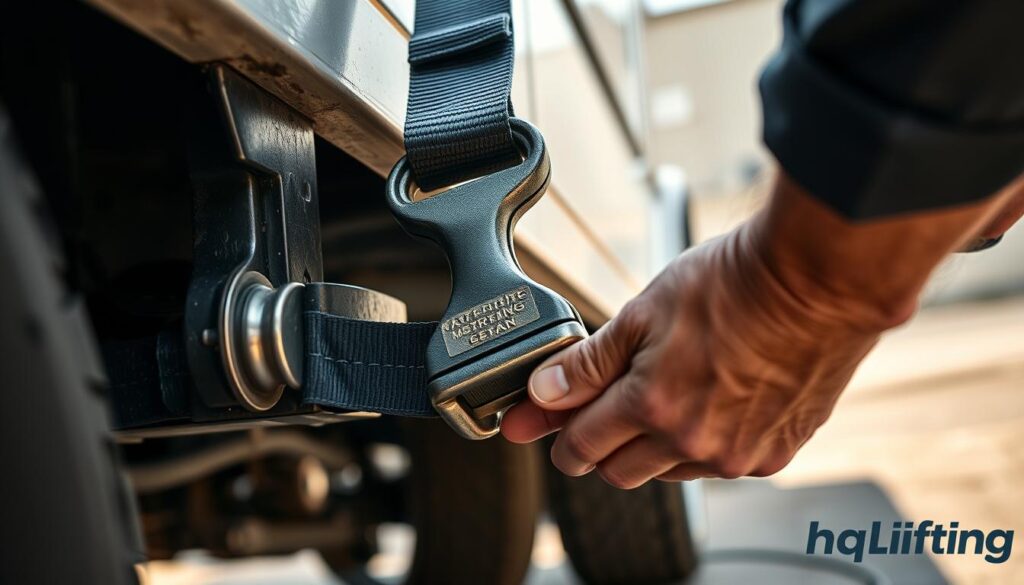
Techniques for Strapping Tapes on Cars
| Situation | Technical Solution |
|---|---|
| Turnstile jammed due to dust or oil | Use of grease-free lubricant spray + release in slow movement (like unlocking a load ratchet strap) |
| Mounting on sensitive surfaces | Apply lateral pressure on the lever, keeping the ratchet axis aligned with the direction of the vehicle (like releasing the ratchet of a car seatbelt) |
| Clothes exposed to low temperatures | Perform lubrication with synthetic oil before release |
⚠️ Avoid forcing frozen locks: Adjust the pressure according to the specifications in the technical manual (ISO 10267).
Common Mistakes When Trying to Release the Ratchet Strap
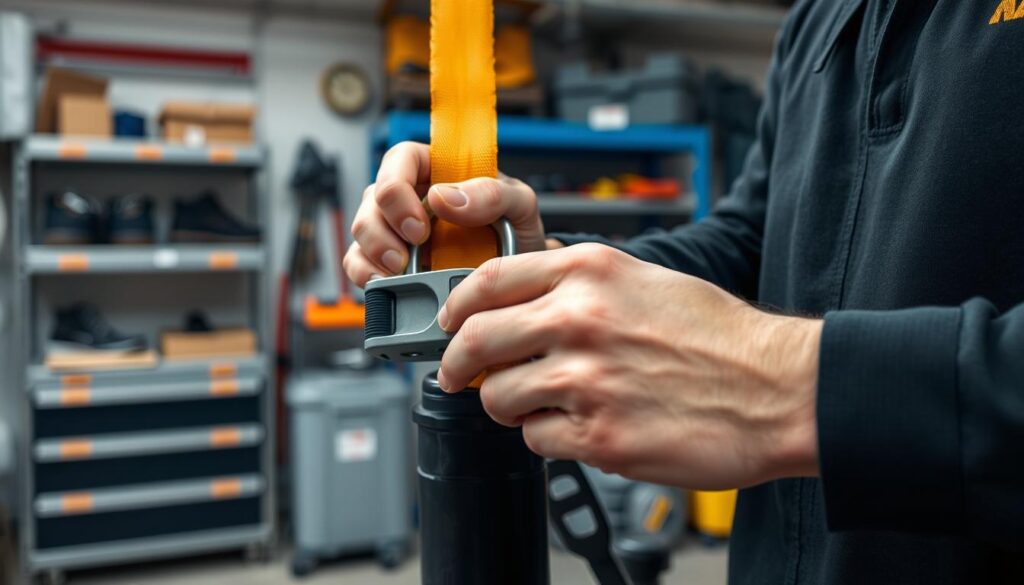
When dealing with industrial ratchets, making common mistakes can damage the equipment. It is crucial to use the safety ratchet strap carefully. This prevents serious problems.
✅ Excessive Voltage Problems:
- If the belt is too tight, it can break suddenly. This happens when it is above 75% of the capacity.
- If the belt is too tight, it can break suddenly. This happens when it is above 75% of the capacity.
- Before starting, it is important to check the load. This ensures that the strap is opened safely.
✅ Lever Positioning Failures:
- If the lever is too tilted, it can damage the shaft. This happens if it is too far down or up.
- It is essential to align the thumb correctly. This helps to avoid problems.
- A common mistake is pressing the lever sideways. This unbalances the mechanism.
✅ How to Avoid Damage:
To avoid damage, follow the guidelines of ISO 13920-1:
- For heavy loads, release the strap in two steps. First, reduce the tension on 30%, and then fully disengage.
- Before use, check that the attachment points are in good condition. Use non-destructive tools for this.
- Store the tape on smooth surfaces. Avoid strong twists and exposure to corrosive agents.
Following these guidelines helps maintain safety and prolong the life of the strap. This prevents problems during the use of the ratchet in critical situations.
Preventive Maintenance to Facilitate the Opening of Turnstiles
For the turnstiles to work well and last longer, it is crucial to perform preventive maintenance. Knowing how to release a strap ratchet e how to unlock a load ratchet strap depends on keeping the components in good condition. See the following technical steps:
✅ Inspection Cycles:
- Heavy load: perform inspection every fifteen days. Check the wear of the teeth (no more than 0.5mm) and the central shaft (play no greater than 0.3mm).
- Moderate use: check monthly. Inspect the levers and fastenings.
✅ Technical Cleaning:
- Remove residues with non-corrosive solvents, such as isopropanol 70%.
- Avoid using products with vinyl chloride, as they can damage zinc components.
- Apply PTFE-based dry lubricants to the gears and shafts.
- Do not use mineral oils, as they attract dust in polluted areas.
✅ Controlled Storage:
- Store in places with humidity not exceeding 70% and protection against UV radiation.
- Store the rolled tapes, keeping a distance of 15cm from hot surfaces.
Use a torque of 5-8Nm when adjusting to ensure smooth movement. This reduces the effort when how to unlock a load ratchet strap. Monitor the lever for deformations and replace parts with wear above the allowed limit. This attention prevents problems and maintains the equipment certification.
Solutions for Jammed or Rusty Turnstiles
To deal with ratchets that do not work, follow some important tips. They help restore operation without risks. Before starting, check the degree of damage to the ratchet.
Use of Lubricants and Specific Products
For superficial damage, use:
- ✅ Penetrating lubricants with molybdenum disulfide: They fight corrosion and help loosen the ratchet. It should be left to act for 15-30 minutes.
- ✅ Synthetic-based anticorrosive lubricants: They are great for keeping the straps in good condition, especially in humid environments.
- ✅ High-power technical solvents: They remove dirt without damaging the metal.
It is important to follow the manufacturer's instructions to use these products correctly.
When to Replace a Damaged Ratchet
It's time to change the turnstile when:
- There are deformations greater than 2mm in important parts.
- Corrosion reduces the material thickness by more than 15%.
- After trying to lubricate, the ratchet does not reach the minimum tension.
Choose a new model that has the same load capacity and is compatible with your structure.
Conclusion
Handling ratchet straps correctly is crucial for safety in logistics and transportation. It is important to follow specific technical steps. This includes identifying the components, positioning the hands correctly, and controlling the force.
Using PPE and appropriate tools, such as lubrication keys, helps prevent problems. This avoids mechanical damage and structural failures. ✅
Errors, such as using too much force or improperly positioning the lever, can cause damage. Keeping the equipment in good condition with lubrication and inspections is essential. Choosing certified straps, following standards such as ABNT NBR 12,345 and ISO 678:2023, is important for safety.
Professionals must be well trained in safety. Knowing how to open the safety ratchet strap helps prevent accidents. If equipment is damaged, it must be replaced immediately, following the regulations.
Understanding how the turnstile works helps save money and avoid problems. Companies that follow the guidelines of Anatel and Inmetro operate more efficiently. Following the protocols prevents problems and maintains the integrity of the systems.
Share:

June Han /founder and designer
The co-founder of Hqlifting, sales director, amateur writer about fitness business


